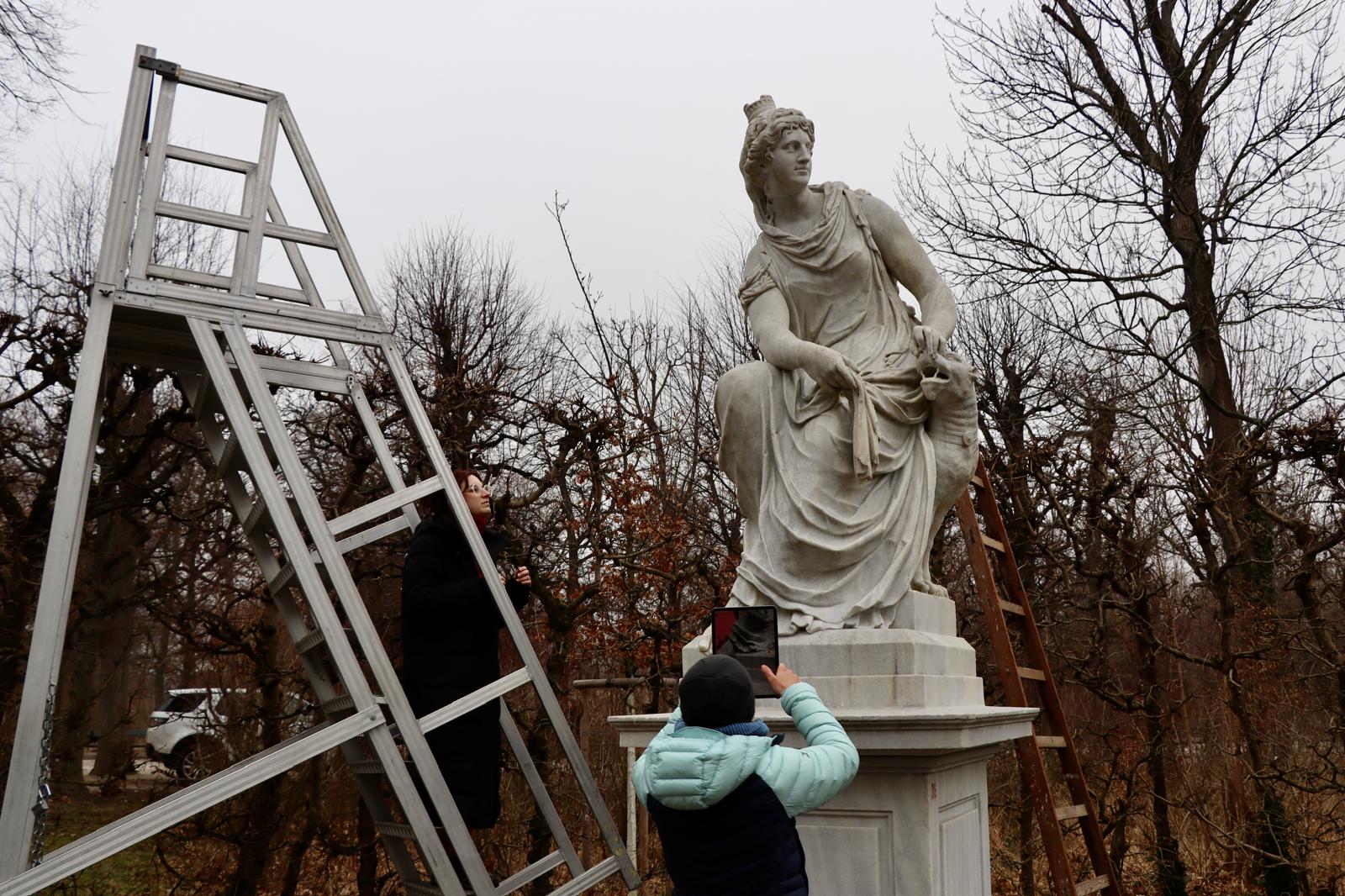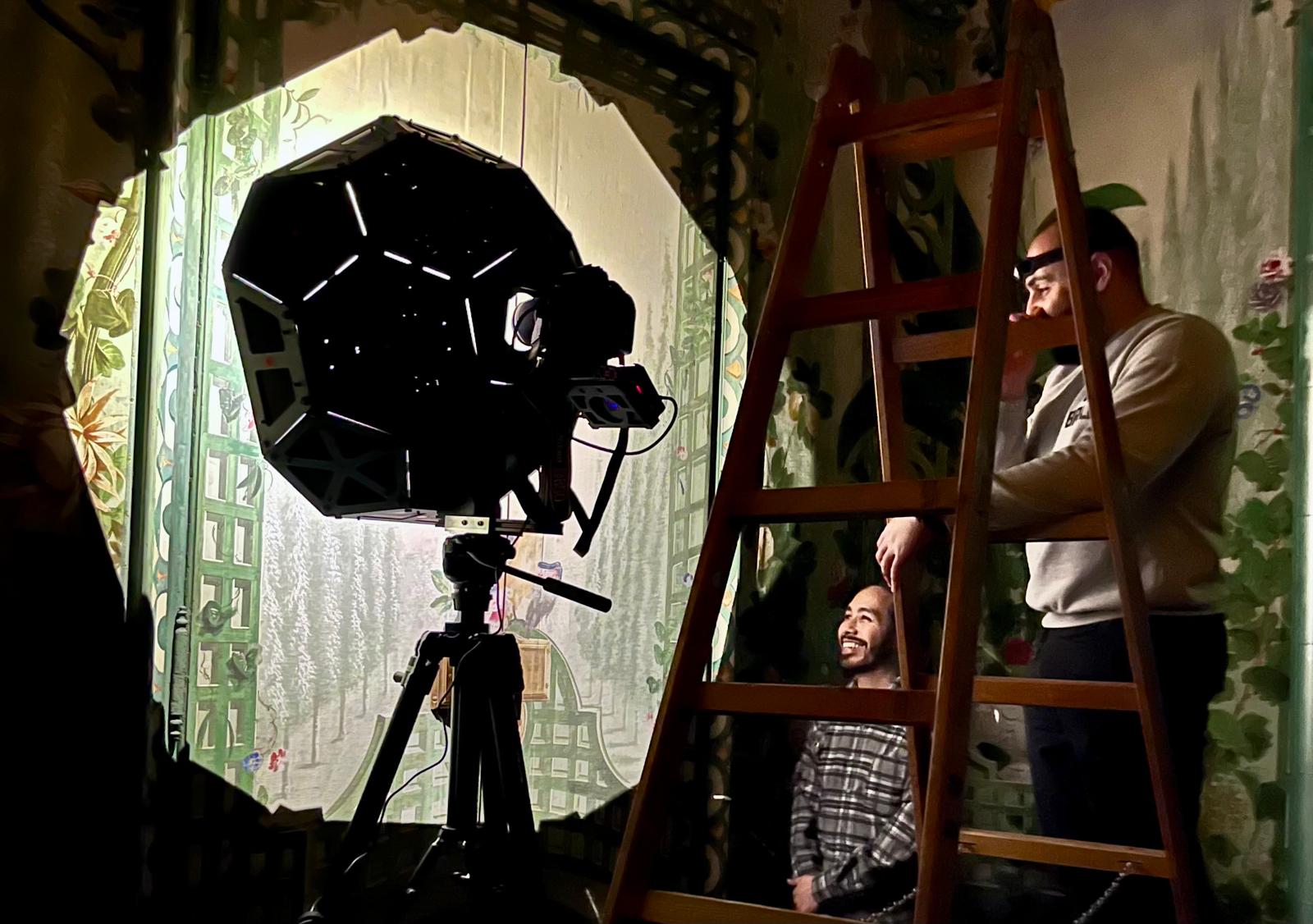PRESS RELEASE
ChemiNova: Advancing Cultural Heritage Conservation at Schönbrunn Palace, Vienna
Vienna, Austria, 27 January 2025 – From 20 to 24 January 2025, the ChemiNova project conducted a data acquisition campaign at the iconic Schönbrunn Palace in Vienna. Funded by the European Union’s Horizon Europe Framework Programme, ChemiNova aims to refine cutting-edge technologies for monitoring, analyzing, and preserving cultural heritage sites, particularly in the face of challenges posed by climate change and human-induced threats.
ChemiNova provides a comprehensive solution for cultural heritage professionals through a single, integrated framework. Unlike stand-alone solutions, its adaptable technology can be used globally, empowering heritage professionals everywhere. The project also engages local communities through citizen science and awareness initiatives.
Schönbrunn Palace, a UNESCO World Heritage Site and Austria’s most visited cultural landmark, serves as case-study location for this project. Its exquisite Baroque architecture, extensive gardens, and well-preserved interiors embody centuries of European history. The collaboration at Schönbrunn provides ChemiNova with a unique opportunity to conduct data acquisition, gathering valuable insights that will contribute to the development of innovative damage assessment and monitoring tools.
During the campaign, the team focused on key areas, including the roof, a sculpture in the garden, and artworks in the Bergl-Room East and Rössl-Room East. This project phase involved developing prototypes for various applications, ensuring that all tools function seamlessly as an integrated suite to assist heritage professionals in their conservation efforts.
“Our core mission is to preserve and develop the heritage entrusted to us - this requires collaboration, knowledge, commitment, innovation and also ‘learning from others’. ChemiNova helps us to better understand environmental factors and their impacts and to develop new ways of conservation. We are delighted to be part of this pioneering project and to actively contribute to the protection of Europe's rich cultural heritage” said Klaus Panholzer, CEO Schönbrunn Group at his opening remarks of the ChemiNova General Assembly.
“Our vision with ChemiNova is to equip cultural heritage professionals with tools that seamlessly integrate into their existing workflows for damage assessment and monitoring, enhancing efficiency and effectiveness. Schönbrunn Palace was selected due to its extensive digital documentation, allowing us to build on existing work and tailor it to our project’s needs,” emphasized Cristina Portalés, the Project Coordinator of ChemiNova.
The Vienna pilot is expected to produce data that will be valuable for further developing the technologies for heritage professionals across Europe and beyond. In the coming months, training programs will be rolled out to introduce the ChemiNova tools to practitioners and enable them to integrate these tools into their work.
For more information, visit ChemiNova's website.
Media Contacts
Jennifer Copithorne
Manager of Partnership and Communication, ICCROM
communications@iccrom.org
Communications Schönbrunn Group
kommunikation@schoenbrunn-group.com
ICCROM (International Centre for the Study of the Preservation and Restoration of Cultural Property) is a partner of the ChemiNova Consortium. As an intergovernmental organization headquartered in Rome, ICCROM serves its Member States to promote the conservation of all forms of cultural heritage in every region of the world. For over six decades, ICCROM has partnered with Member States to support them in safeguarding heritage within their borders and beyond.
Schönbrunn Palace is a World Heritage Site and Austria’s most frequented tourist destination. This Baroque synthesis of the arts consisting of palace and gardens was owned by the imperial family for centuries and can still be experienced for the most part in its original historical state. Many attractions await visitors – ranging over a tour through the imperial family’s authentically appointed residential and state rooms in the palace, the maze and labyrinth in the palace park, and even its own children’s museum.




